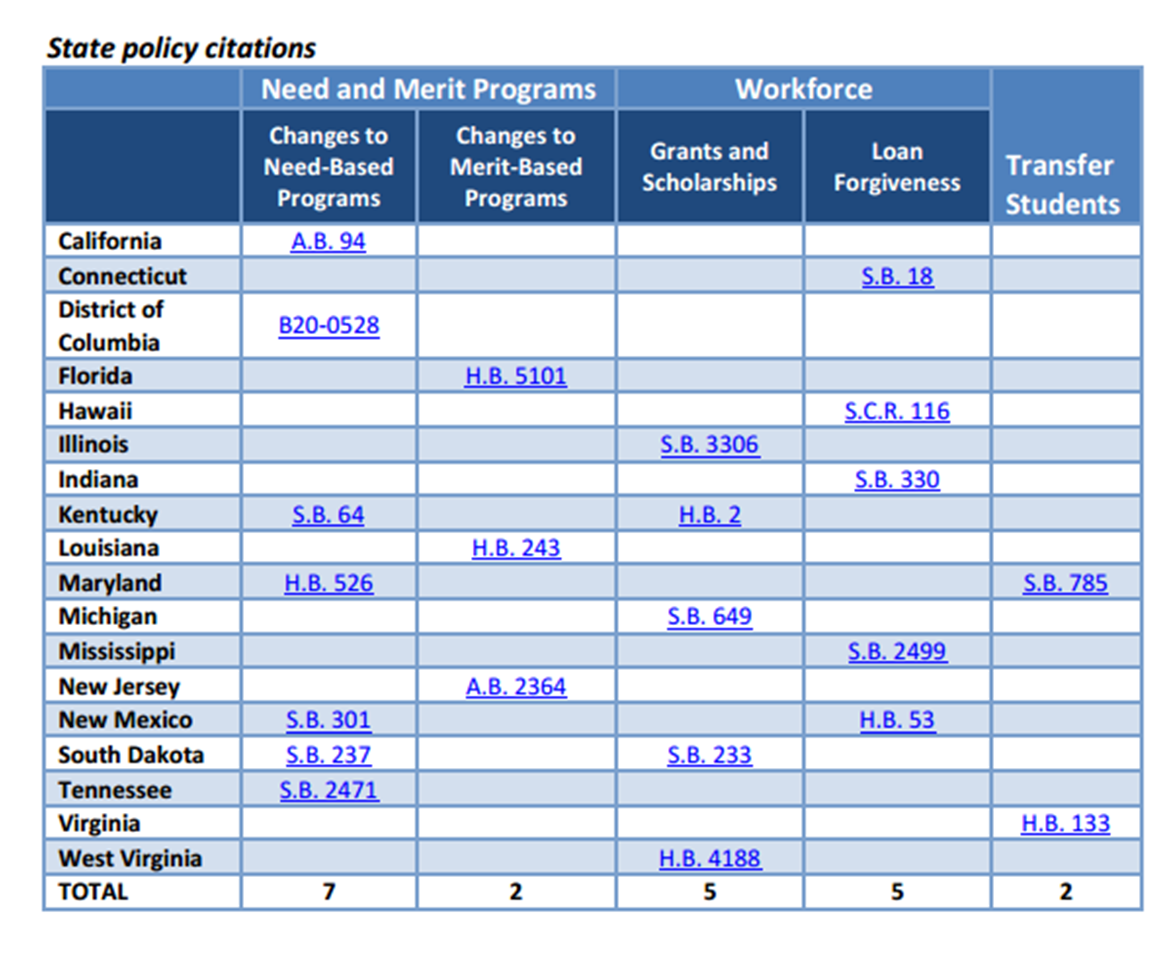States contributed $11 billion in financial aid to students enrolled in higher education in the 2012-2013 academic year according to a recent report from the Education Commission of the States which reviews trends in state financial aid programs enacted through state legislatures in 2013 and 2014. Some of the more prominent and common trends they found dealt with changes to need and merit based programs, linking aid to workforce demands and focusing on two-to-four year transfer programs.

Among the report’s other findings:
- At least seven states made changes to existing need-based programs or added new need-based programs in 2013 and 2014.
- New Mexico and California expanded their definitions of qualifying need by raising their maximum income caps to $60,000 in and $150,000 respectively. As a result, more middle class families qualified for state aid.
- In an effort to retain talented students, increase college persistence and increase completion, about 25% of the total amount of state aid distributed to students was based on non-need criteria (i.e. merit).
- Research is mixed on the effectiveness of this strategy as recent data from Florida and Massachusetts show limited impact of merit aid on degree production.
- Some states are using financial aid to incentivize workforce outcomes: Student loan forgiveness and repayment programs are being used to lower the cost of degrees in high need areas and encourage students to complete degrees in high need fields.
- Given that 1/3 of all first-time undergraduate students enroll in more than one institution within five years, two states in particular (Maryland and Virginia) are helping students transfer from two to four-year institutions by offering financial aid based on credits earned and for entering high-need areas of the workforce.
- Five states passed legislation appointing commissions to research college affordability issues.
